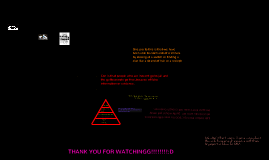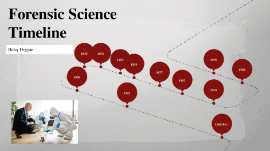Creating Effective PowerPoint Templates for Learning
Transcript: Introduction to PowerPoint Templates for Learning Setting the Tone for Learning Templates establish a cohesive look for educational content, creating a conducive environment for effective teaching and learning. PowerPoint templates enhance learning experiences by offering structure and visual appeal. Importance of Visual Design Visual elements aid in information retention, engagement, and overall comprehension for learners of all levels. Benefits of Using Templates Templates save time, maintain consistency, and improve organization of educational content. Utilizing Slide Layouts Effectively Creating Customized Templates Structuring Content for Clarity Organizing information in a logical sequence facilitates comprehension and focus during educational presentations. Clear and concise content arrangement leads to better retention and understanding among learners. Choosing the right color schemes, incorporating visuals effectively, and adding interactive features are key elements in creating engaging PowerPoint templates for educational purposes. Structuring content and design elements on slides is crucial for enhancing the learning experience and maximizing information retention. Choosing Appropriate Color Schemes Using Consistent Formatting Enhancing Navigation Experience Selecting color schemes that align with the learning context helps in creating a visually appealing and cohesive template design. Colors impact emotions and influence focus, making it essential to choose wisely. Maintaining uniform styles, fonts, and layouts throughout the presentation ensures a professional and cohesive look. Consistent formatting aids in visual coherence and simplifies information processing for the audience. Implementing intuitive navigation features such as hyperlinks, slide transitions, and interactive elements can enhance the audience's engagement and overall learning experience. Smooth navigation promotes seamless progression through the presentation content. Incorporating Visual Elements Adding Interactive Features Visual elements such as icons, illustrations, and images enhance the overall aesthetics and comprehension of educational content. They aid in conveying complex information concisely and engaging learners effectively through visual stimuli. Integrating interactive elements like hyperlinks, animations, and audio/video clips can elevate the engagement level of PowerPoint presentations. Interactive features enable active participation and enhance the learning experience for students of all ages and backgrounds. Enhancing PowerPoint Templates for Learning Engaging Students with Interactive Elements Best Practices for Educational Presentations Creating Engaging Presentations for Education Ensuring accessibility and inclusivity in educational presentations is vital for reaching all learners effectively. Combining Images Keywords for Image Search Integrating multimedia, quizzes, and participation features boosts student engagement and learning outcomes in educational presentations. Providing Clear Learning Objectives Click to add text Clear objectives help students focus on key learning points and stay engaged throughout the presentation, leading to improved retention and understanding of the material. Maintaining Accessibility and Inclusivity Promoting Visual Literacy Skills Accessibility Inclusivity Clarity Visual Literacy Encouraging Participation Embedding Multimedia Content Accessibility features such as alt text for images and proper color contrast enhance the learning experience for all students, including those with disabilities. diverse students education learning visualization Highlighting the importance of visual elements in presentations cultivates students' ability to analyze and interpret visual information, enhancing their overall comprehension and critical thinking skills. Encourage student engagement through discussions, group activities, and interactive exercises to foster a collaborative learning environment. Incorporate videos, images, and audio clips to enhance visual appeal and convey complex concepts in a dynamic way. Best Practices Summary Incorporating accessibility features, setting clear objectives, and promoting visual literacy skills are essential elements for creating effective educational presentations that cater to diverse learning needs. Implementing Quizzes and Polls Utilize interactive quizzes and polls to assess learning, promote active participation, and reinforce key concepts.

















